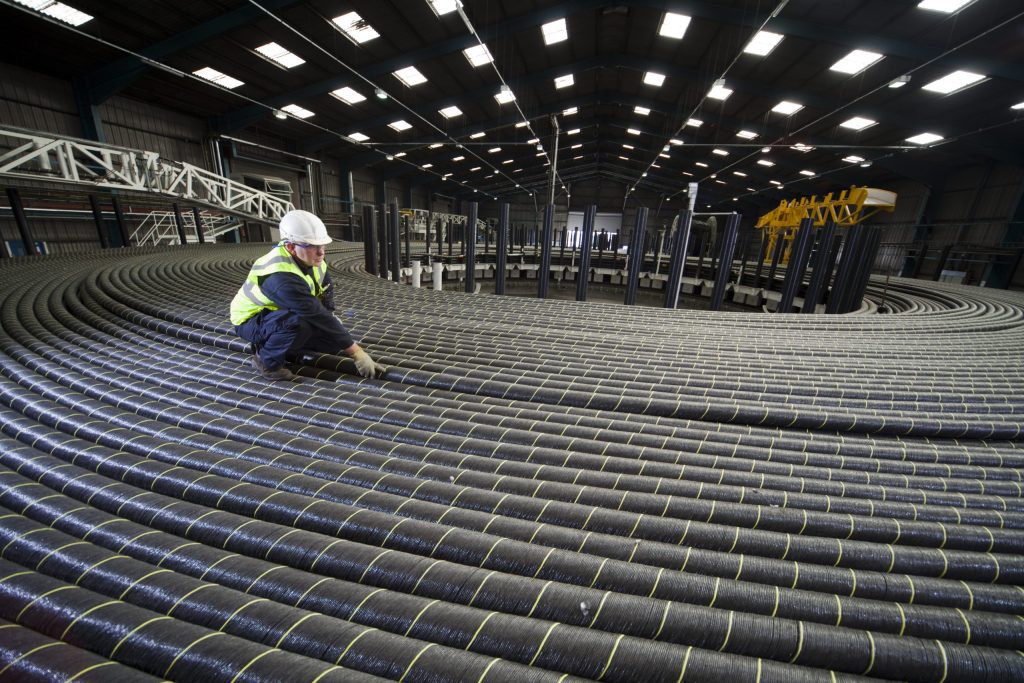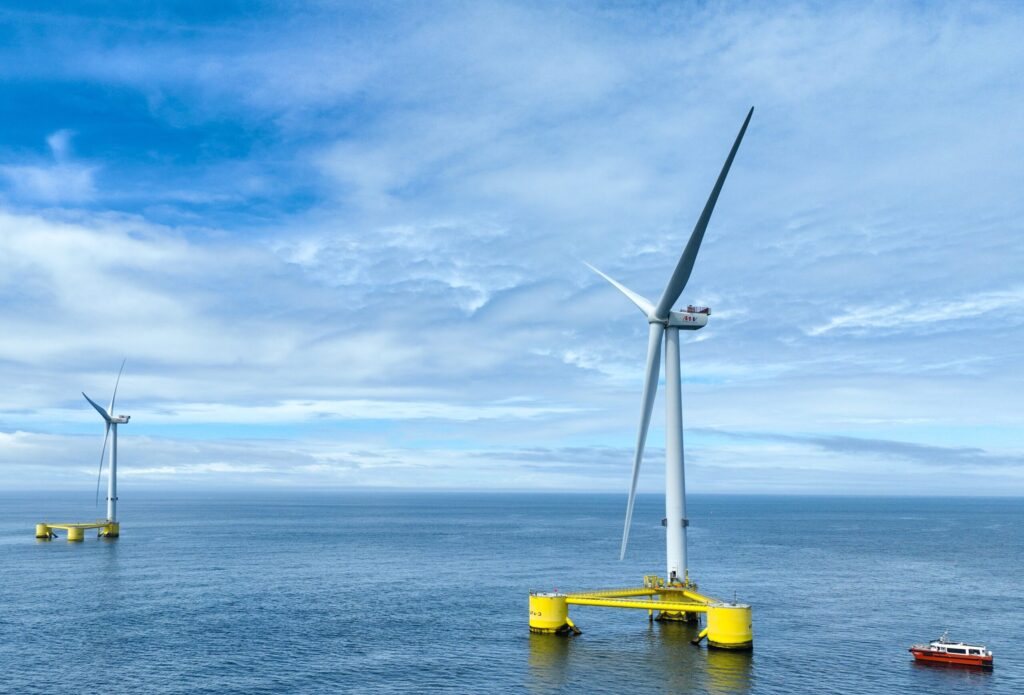The Floating Offshore Wind (FOW) industry is exploring innovative cable topology and connection designs that diverge from traditional fixed-bottom offshore wind systems. The variety in cable array configurations, connector types, and subsea hub designs introduces new risks and opportunities.
The FOW CoE project “Cable Topology Comparison” undertakes a high-level techno-economic study to evaluate the costs, risks, and opportunities associated with different cable topologies and connection methods.
The project included failure mode, effects, criticality analysis (FMECA), and reliability, availability, and maintainability (RAM) methods to compare cable ancillary technologies and topologies. The study used assumptions identified through industry engagement and focused on 900 MW commercial-scale reference arrays for 66 kV and 132 kV cable designs at a water depth of 100 m. The estimated supply costs of traditional and emerging technologies over the next 5 to 10 years were also considered.
Costing included project lifecycle phases: installation and operation (including maintenance and tow to-port (T2P) costs).
This public summary report does not include the calculated values for capital expenditure (CAPEX), operational expenditure (OPEX), and levelised cost of energy (LCoE). Instead, the study presents the results as percentage differences from the baseline scenario: a 66 kV radial topology with a conventional connection with a pre-termination design. The study selected the 66 kV radial as the baseline due to its simplicity, proven reliability, and comparatively low CAPEX and OPEX. The pre-terminated connection for a conventional subsystem offered the lowest LCoE compared to newer connection technologies during the initial phases of the study.
Initially, the study assumed high failure rates for novel designs. However, the study anticipated that engineering improvements and technology qualifications would decrease these anticipated rates. Therefore, the study included reliability sensitivity cases that demonstrated the value of these new connector technologies and the topologies they enable.





